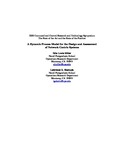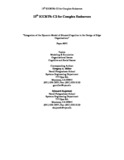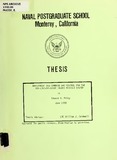A Dynamic Process Model for the Design and Assessment of Network Systems
| dc.contributor.author | Miller, Nita Lewis | |
| dc.contributor.author | Shattuck, Lawrence G. | |
| dc.date | 2006-06 | |
| dc.date.accessioned | 2013-09-18T23:05:07Z | |
| dc.date.available | 2013-09-18T23:05:07Z | |
| dc.date.issued | 2006 | |
| dc.identifier.citation | Miller, N.L. and Shattuck, L.G. "A Dynamic Process Model for the Design and Assessment of Network Systems", Proceedings of the 2006 Command and Control Research and Technology Symposium, San Diego, CA June 2006. This paper won the Gary F. Wheatley Best Paper Award for the entire conference. | |
| dc.identifier.uri | https://hdl.handle.net/10945/36496 | |
| dc.description | Proceedings of the 2006 Command and Control Research and Technology Symposium, San Diego, CA June 2006. | en_US |
| dc.description | This paper won the Gary F. Wheatley Best Paper Award for the entire conference. | en_US |
| dc.description.abstract | Modern warfare has witnessed the proliferation of coalition efforts to contain terrorism. To be successful, these efforts rely upon the effective integration of human and technological agents. Typically, models and analyses of network centric warfare (NCW) focus on technological aspects of a system, eschewing the roles, contributions and decisions made by humans. The Dynamic Model of Situated Cognition (DMSC) emerged as an attempt to represent relationships between technology and humans in a system. The model has been applied in a variety of contexts: individual performance, military command and control, naval operations, human error in military mishaps, and, most recently, to modeling team behavior in complex organizations (Miller & Shattuck, 2004, 2005a, b; Shattuck & Miller, 2004, 2005; Miller, Shobe & Shattuck, 2005). During the 2004 CCRT Symposium, we introduced “A Process Model of Situated Cognition in Military Command and Control.” We have expanded and refined the model over the last two years and it continues to be well received. In this paper, we review these changes and extend the Dynamic Model of Situated Cognition to serve as an aid for system designers as they consider how individual and team behaviors emerge and interact with complex technology in a system context. | en_US |
| dc.rights | This publication is a work of the U.S. Government as defined in Title 17, United States Code, Section 101. Copyright protection is not available for this work in the United States. | en_US |
| dc.title | A Dynamic Process Model for the Design and Assessment of Network Systems | en_US |
| dc.contributor.department | Operations Research |





